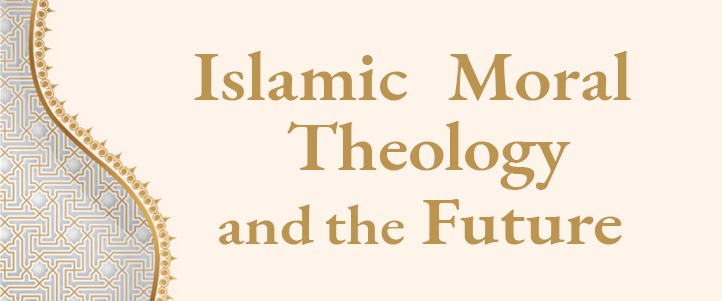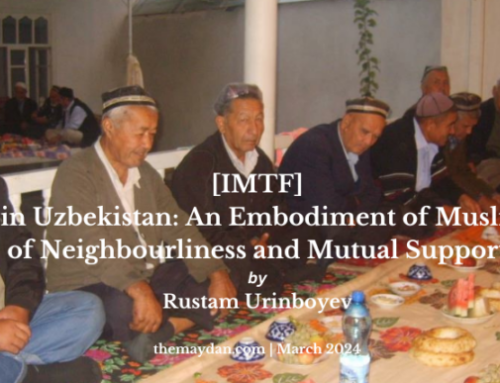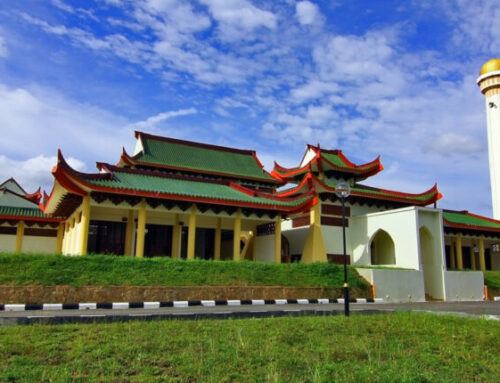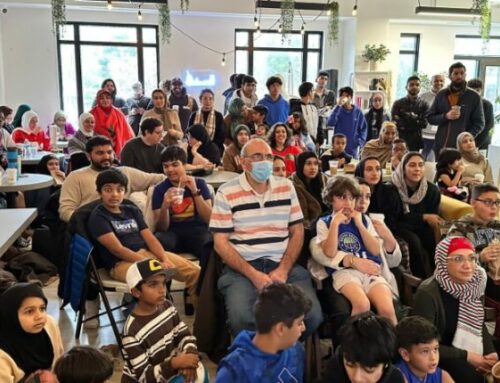
Reflecting Muslim Communal Ethics in the Built Environment
In the first year of the Islamic Moral Theology and the Future project (IMTF), authors contributing to the part of the project concerned with communal morality and ethics in Muslim contexts discussed various concepts that undergird the Muslim moral “ideal” of communal life. Some authors, for example, focused on the concepts of ihsan and “neighborliness (jariyya)” that encapsulate the sense of moral and material responsibility Muslims should feel for those living in physical proximity to themselves (Kamali, Eggen, Hashas). They were clear that these responsibilities extended not only to fellow Muslims, but to all their neighbors and to all members of their community as a fundamental principle of human relationship (Karic, Mattson). Some authors took an expansive view, arguing that the Muslim communal ethic was informed by a broad cosmopolitan spirit, through which Islamic religious principles and practices integrated with and adapted elements of the many other cultures Muslims encountered, enriching Muslim life and facilitating the community’s growth and development (Karim). Others looked more closely at the way in which communal ethics are tied to the individual ethics of interpersonal relations. The community’s ideals, they argued, are only realizable through the efforts of Muslim individuals to cultivate virtuous interactions with others, suppressing or restraining their baser desires and selfish concerns, with these individual efforts constituting, metaphorically, the many individual “bricks” needed to build the moral edifice of the community (Alatas, Jomaa). Authors found the bases of these principles in both religious texts and Muslim history, but also drew upon modern examples of these principles on display in the face of contemporary ethical challenges (Kamali, Khamis).
This author, and many of the other IMTF contributing authors, have emphasized the importance of the physical, grounded space of the community as an arena for the cultivation and manifestation of Muslim virtue. In light of this, the focus for the second year of the project will be on the ways in which certain Muslim communities, both large and small, have endeavored to build their communal spaces (from mosques and schools, to devotional sites, community centers, and whole neighborhoods) in ways that reflect, facilitate, and encourage the cultivation of both communal and individual virtue.
…the focus for the second year of the project will be on the ways in which certain Muslim communities, both large and small, have endeavored to build their communal spaces (from mosques and schools, to devotional sites, community centers, and whole neighborhoods) in ways that reflect, facilitate, and encourage the cultivation of both communal and individual virtue.
Scholars of Islamic art and architecture have long pointed out the way in which the traditional built environments of Muslim communities—and mosques in particular—reflect the spiritual principles of the religion. From domes and open courtyards that draw one’s attention beyond the here below and encourage calm contemplation, to the minarets that aesthetically and functionally manifest vigilance and spiritual discipline, the physical space of the mosque is designed to engender and facilitate an attitude conducive to prayer and worship. The geometric patterns and arabesque flowers and vines, interwoven with Qur’anic Arabic calligraphy, that adorn its walls subconsciously remind worshippers that God is the source of both the rigorous mathematical order and the spontaneous regeneration of life that they experience in the world, as well as the spiritual truths that are revealed in scripture. From the point of view of practical ritual and ethics, the mihrab offers a focus for their prayer, the minbar reflects the importance of religious guidance from learned members of the community, the fountains for washing emphasize the importance of physical cleanliness in relation to spiritual practice, and the collection box reminds worshippers that their responsibilities to God include the material support of the needy in their community. Moreover, all these elements have been creatively incorporated into mosque architectures as culturally varied and distinct as the many different Muslim communities throughout the world. This variety demonstrates the cosmopolitan spirit that allowed universal Muslim religious and ethical principles to combine aesthetically with local cultures, materials, and building technologies in mutually enriching ways.
How are the principles of Muslim communal ethics manifested today not only in mosques, but in other communal spaces in both minority and majority Muslim contexts? How does the mosque itself function as “community space” for a variety of purposes other than prayer and how do the communal functions of the mosque differ in varying contexts (urban/rural, in majority/minority Muslim communities, in different cultural locations)?
In the next installment of the IMTF roundtable blog, I invite contributors to reflect and expand upon these observations related to the connection between Muslim ethics and aesthetics in the communal environment, with a focus on how and to what extent this connection is manifested in contemporary Muslim communities. How are the principles of Muslim communal ethics manifested today not only in mosques, but in other communal spaces in both minority and majority Muslim contexts? How does the mosque itself function as “community space” for a variety of purposes other than prayer and how do the communal functions of the mosque differ in varying contexts (urban/rural, in majority/minority Muslim communities, in different cultural locations?) While the term “umma” signifies the Muslim community writ large and imagined as a universal endeavor that spans the many individual Muslim communities around the globe, it is good to recall that the first Muslim umma was housed in a single city. Space for the community’s first mosque had to be negotiated by the Prophet and the Muslim emigrants from Mecca with the resident Medinan population; the space had to be built from scratch, from local materials, and expanded as the needs of the community grew; it was a site not only of prayer and contemplation, but also of communal learning, contestation, and resolution; and it existed, at least initially, among a religiously diverse population and was open in the Prophet’s lifetime to both Muslim and non-Muslim visitors, as well as to both male and female congregants. How, and how well, do contemporary Muslim communities reflect the characteristics of the first local Muslim community in the Prophet’s Medina and its mosque and communal spaces?
At the same time, modern developments have raised new moral and ethical challenges, from concerns regarding the environmental impact of human activity and building, to the importance of religious and gender inclusivity. How are these concerns reflected in contemporary Muslim spaces?
Many Muslims have elaborated upon the environmental ethic embedded in their religious scriptures, texts, and practices. How do or should the building of contemporary Muslim communal spaces demonstrate adherence to these ethical principles by utilizing greener construction and modes of energy consumption? As we mentioned, the historical use of localized materials and building techniques (probably of necessity) generated the rich diversity of mosques we see throughout the Muslim world and allowed these structures to fit organically in their varying environments. Although less necessary today (given modern modes of transportation and communication), a more localized approach to construction would be environmentally beneficial in other ways—for example, by using resources that do not need to be shipped from afar, and in some cases, allowing structures to blend more seamlessly into the surrounding environment. Are there examples of these principles being employed in the contemporary construction of Muslim community spaces? Given contemporary Muslim concerns about the environment (as manifested in the “Green Deen” movement among others), how should these ethical concerns manifest in their built environment?
Local considerations also relate to the functionality of the Muslim spaces. How does a mosque or Muslim communal space function differently, for example, in a Muslim minority context? In the North American context, where Muslims only constitute roughly 2% of the population, mosques serve a wide variety of purposes and often serve as a central hub for the local Muslim community—creating a defined communal home for Muslims within the broader social space dominated by other religions. This might make it a site not only of “refuge” from the broader, heterogeneous community, but also a site from which the Muslim community might integrate and form moral and social connections with that broader community, through both charity and advocacy work, interfaith and civic engagement. What elements of construction and planning are necessary to allow mosques and other Muslim communal spaces in Muslim-minority contexts to serve as sites of outreach and connection with the broader (non-Muslim) community? In the time of the Prophet, as noted above, the mosque was open to Muslims of different tribal backgrounds, as well as (in some cases) to people of other religious traditions. In parts of the world where the Muslim community is a minority, or else has grown organically with a diverse set of religious perspectives (for example, in the Subcontinent or Southeast Asia) there is and has been a documented openness to different Muslim populations or non-Muslims in some mosques or Sufi sites. How open are contemporary mosques or other community spaces (in either a Muslim majority or minority contexts) to non-Muslims? In Europe or North America, where the Muslim populations are drawn from a variety of racial, ethnic, and “sectarian” backgrounds, are Muslim community structures sites for bringing Muslim together across racial, ethnic, and sectarian lines, or do they serve to further entrench their differences, for example, by allowing certain spaces to be dominated or controlled by particular racial, ethnic, or sectarian groups?
How can or should contemporary mosques honor both the legacy of the Prophet’s original mosque, and the contemporary spiritual and social needs of Muslim women in the public sphere, by building mosques and creating mosque cultures in which the space is equally available to men and women?
Finally, gender equality as a moral ideal and imperative has gained important ground in modern society, and it is also articulated as a principle by many contemporary Muslims. Yet in most Muslim communities, mosques are still sites that are primarily controlled by and for men. Both men and women congregated, prayed, and learned in the communal space of the Prophet’s mosque, but as the Muslim community grew and expanded, Muslim tradition generally encouraged men praying in mosques and women praying at home, reflecting a traditional (but not scriptural) conception of public space as male space and private space (the home) as the appropriate space for women. Although women are far more present, if not equally present, in public space today than in premodern times – in both Muslim -majority and -minority contexts—gender segregation, even in contemporary mosques, means that women’s access to mosque space is often limited, making it a space in which women do not always feel welcome. The growing presence of women in the public sphere is likely a factor in many movements today that seek to either claim, reclaim, or create public communal Muslim spaces for women. How can or should contemporary mosques honor both the legacy of the Prophet’s original mosque, and the contemporary spiritual and social needs of Muslim women in the public sphere, by building mosques and creating mosque cultures in which the space is equally available to men and women? Should there be public mosque and community spaces created and made available exclusively to women?
Muslim communities, like all human communities, both shape and are shaped by, their surroundings, transforming and resignifying local space for religious and moral purposes. At the same time, the spaces that Muslims build become the theater for their practice of individual and communal moral values and ethics; and Muslims, like other religious communities, have always sought to build those spaces in a way that would cultivate those moral values in an organic way, both “built” into their environment and supported by them. As Muslims continue to make their homes in new places, and as ethical issues around environmental responsibility and inclusivity become more prominent global concerns—for Muslims as well as non-Muslims—how are these concerns manifested in the way Muslims construct their communities and communal spaces





